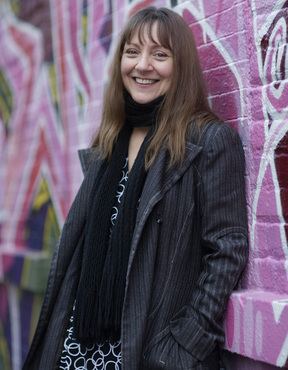In 1879, when Nora closed the door on her husband Torvald and their three children at the end of Ibsen’s groundbreaking play, A Doll’s House, the world responded in shock. Ibsen's Nora was criticized for being an irrational and frivolous narcissist, an ‘abnormal woman,’ a ‘hysteric,’ a vain egotist who abandons her own children. Ibsen himself was accused of advocating the destruction of the family, and with it, morality itself. Perhaps the crux of the societal concern lay in the fear that this new type of Victorian woman would not only destroy the institution of marriage, but that she would turn gender roles, as they knew it, on their head. As one theatergoer expressed, “Women, in refusing to be compliant, were refusing to be women.”
It feels appropriate that now, over a century since Ibsen’s classic premiered, Lucas Hnath (Red Speedo, The Christians, Death Tax), an American playwright, would choose to write A Doll’s House, Part 2, not just as a response to Ibsen’s classic, but as a contemporary continuation of the discussion. Set 15 years after Nora’s disappearance, she has returned, and what ensues may at first feel period - after all, it’s only 1894. But the series of lively debates, questions and arguments presented on marriage, gender roles, motherhood, and love, are as pertinent to today’s contemporary society as ever.
Hnath, in an interview with Charlie Rose said, “I think the thing that Ibsen kept coming back to in all his plays is how are we not free, and how could we be more free, and is that really truly even possible?” Over a century since Ibsen’s A Doll’s House, the landscape of women’s rights and gender expectations have vastly changed, and yet the question still remains as pressing as ever – how are we not free, and how could we be more free?
Brief Snapshot of Women’s Rights in the Victorian Age:
- Under Coverture, a doctrine of English common law, a married woman’s identity – legally, economically and socially – were consumed by the man she married. This law prevented a woman from owning property, entering contracts, or keeping any wages that she earned either before or after her marriage. She was considered one with her husband, and had no separate rights.
- The Matrimonial Causes Act of 1857 made divorce more accessible to the average citizen – but the grounds for obtaining a divorce were not equal for men and women. A man could file on the basis of adultery solely, but a woman had to prove cruelty in addition to adultery, and she was very unlikely to be granted custody of their children.
- Middle and lower class women had little choice in terms of work: governesses, factory workers, clerical positions, and if it came to it, prostitution. Some exceptional women, however, made a great deal of money writing books. That being said, even the most well-revered Victorian lady novelists published their works under pseudonyms. Marian Evans had the nom de plume of George Eliot, and Charlotte Bronte went by Currer Bell.
Today, for the first time in American history, there are more unmarried women than married women, as well as there are more women with higher educational degrees than men, and yet stigmas and inequalities surrounding single women and “spinsters” persist. Beliefs that unmarried women are sexually promiscuous, that they are denying their innate femininity by rejecting procreation and marriage, that they are “crazy old cat ladies,” still permeate our culture. And although the workplace has caught up significantly, overall women only earn on average 80 cents for every dollar earned by a man, and the rights of women are still greatly debated in our homes and in our politics.
To this day, it is still just as shocking that a woman would walk out on her family, and children raised with just a father and no mother is much more uncommon than the alternative. Nora was a trailblazer of women’s liberation and feminism – widening the options, and carving a path for a larger, more encompassing, fulfilling future.
"Today's unmarried and late married women are walking a road toward independence that was paved by generations of women who lived singly when it was far harder to do so than it is today. Crucially, many of those radically single and late-married women were the ones who were able to devote their unmarried, nonmaternal lives to changing the nation's power structure in ways that might better support today's army of free women." Rebecca Traister, All The Single Ladies. 2016.
Vermont Stage will present a A Doll’s House, Part 2 written by Lucas Hnath, directed by Margo Whitcomb at Main Street Landing Performing Arts Center from January 23, 2019 to February 10, 2019.






